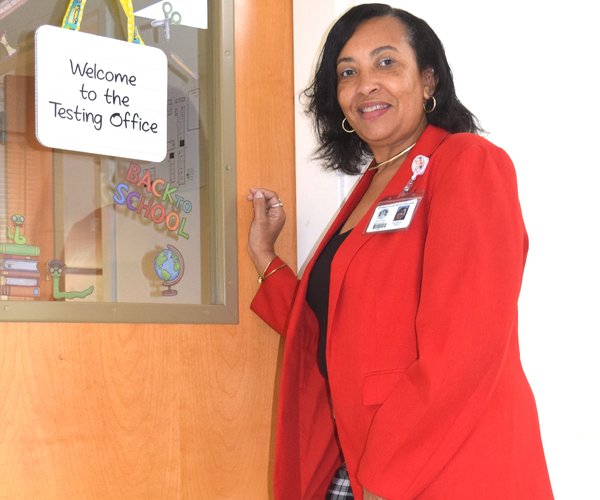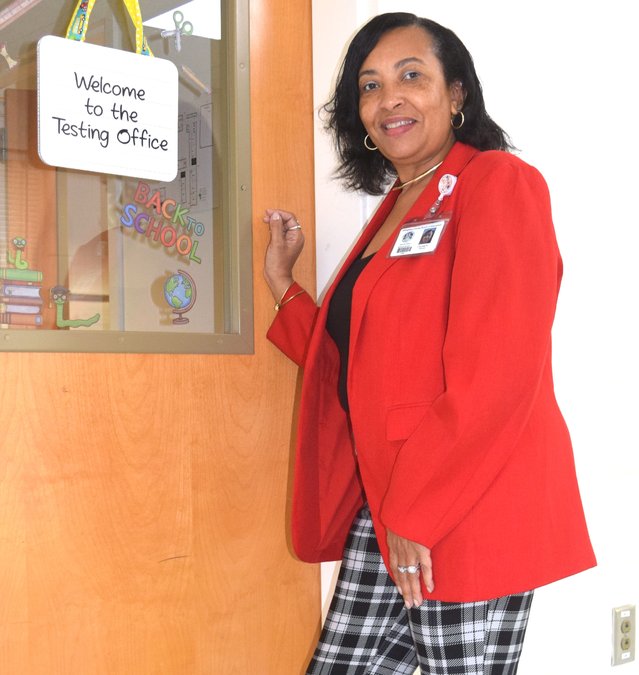Before Effingham County students returned to school last week, the system’s food service workers were being educated on how to safely and efficiently serve breakfast and lunch to approximately 9,000 students each day. This important and often overlooked job requires the efforts of about 128 food service employees, including cashiers.
On July 27, June Poulsen, Food Service Coordinator, organized an in-service training day that included sessions on no-oil frying, use of chemicals and the dishwasher, food-borne illness, hand washing, weights and measures, and standardized recipes and portion control. The session on no-oil frying included an introduction to the new combi-oven, which will be introduced into the schools as the need arises to replace the traditional deep fryers.
The new Effingham County Middle School was equipped with the combi-oven and Guyton Elementary will receive one at the end of September.
According to the USDA, “School lunches must meet the applicable recommendations of the Dietary Guidelines for Americans, which recommend that no more than 30 percent of an individual’s calories come from fat, and less than 10 percent from saturated fat. Regulations also establish a standard for school lunches to provide one-third of the Recommended Dietary Allowances of protein, Vitamin A, Vitamin C, iron, calcium and calories.”
Although school lunches must meet these federal nutrition requirements, local school authorities are allowed to decide what specific foods to serve and how to prepare them. Poulsen understands the Southern connection to foods that are traditionally fried, such as chicken, but she is eager to see the deep fryers disappear from the schools’ kitchens.
“Replacing the deep fryers with combi-ovens (combination steamer and convection oven) will take time,” explained Poulsen, “but as the fryers get older and break down, they will be replaced with combi-ovens instead.”
According to Rational, makers of one type of combi-oven, French fries prepared in a combination steamer/convection oven have 36 percent less fat and 28 percent fewer calories than those cooked in a deep fryer. In addition, there is no transfer of flavor from one type of food to another.
Other benefits include not having to purchase, filter and dispose of cooking oil; less clean up time with no grease residue left on exhaust hoods, floors and cooking utensils; and the ability to quickly reheat and serve products after they’ve cooled, which eliminates waste.
During their 30-minute session on no=oil frying, food service workers learned from Chef Rick Cambell of Rational how to prepare not only French fries but various other foods in the combi-oven.
The food-borne illness session was taught by Sharon Lyscas of First Flight Foods, Inc.; the chemicals and dishwasher session was led by Hughie Tankersley with U.N.X. Inc.
Nursing Coordinator Marsha Cornell taught the hand washing class, and food service managers Brenda Hills (CLC) and Cathy Hall (EES) taught about weights and measures. Liz Dean, food service manager at EMS, and Maryann Goodwin of GES instructed the workers in standardized recipes and portion control. Hills and Hall both attended federally funded classes for a week this past summer at UGA’s Culinary Institute. Poulsen said she asked the ladies to re-deliver the updated information on recipes and portion control, two of the most important yet challenging aspects of the school food service program.
“Unfortunately, many Americans believe that the amount of food provided with a “super-sized” meal is an acceptable amount of food to eat and that anything less is not enough,” stated Poulsen. “We’ve got to change this mindset for our children if we want them to be healthier and live longer.”
By educating the schools’ kitchen managers and cooks on new ways to order food, prepare food and serve food, Poulsen hopes to increase the quality of school meals while continuing to meet federal guidelines.








